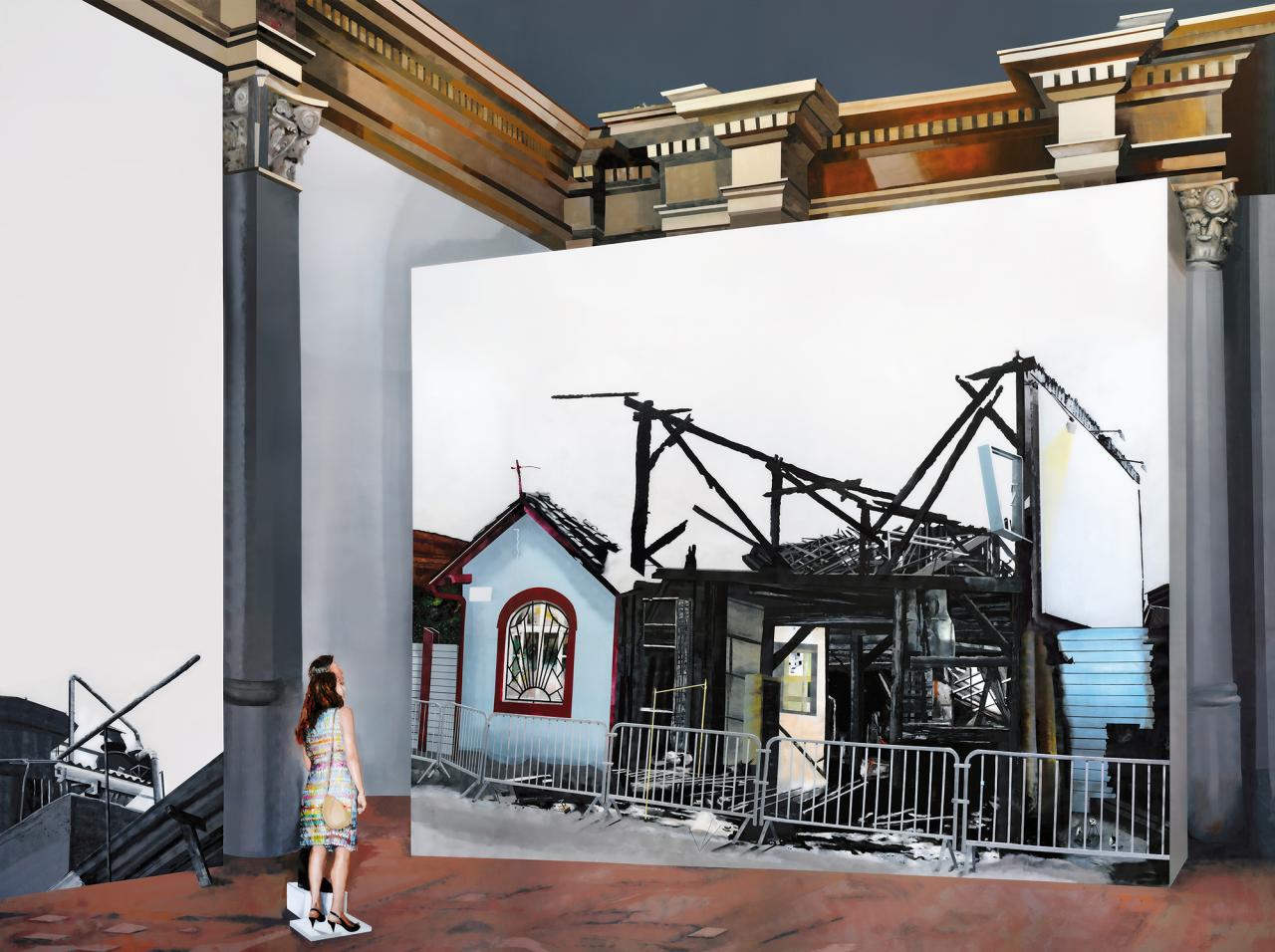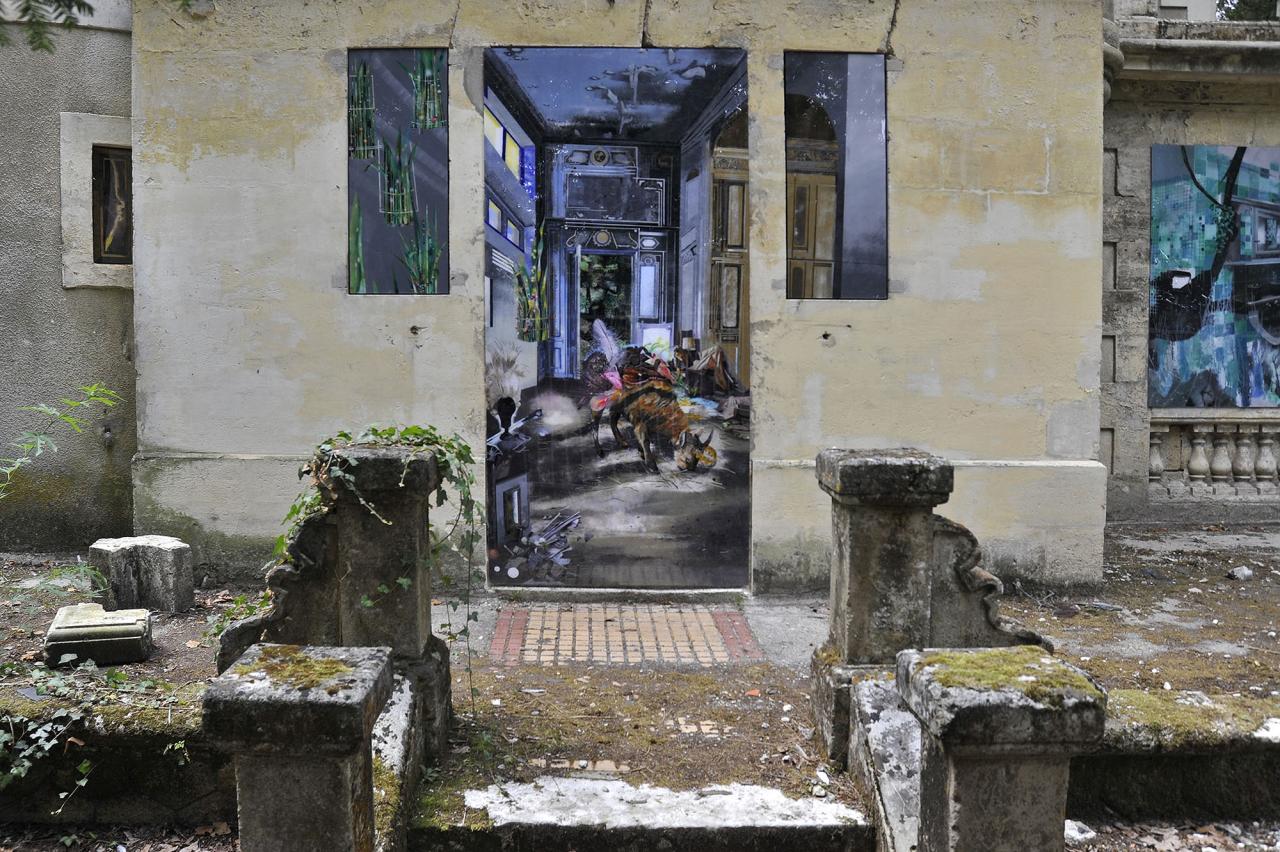Muriel Rodolosse
Born in 1964
Lives and works in Bordeaux and Paris


Coming and going, turning back, exploring, interfering: Muriel Rodolosse’s paintings invite their viewers to move around them. In fact, the medium itself also sets the artist in motion, as she positions herself at the back of the Plexiglas canvas to paint from back to front, first the foreground (details, figures, objects, more or less recognizable shapes), then the setting (landscapes, architectural elements), and finally the background. In doing so, the painter physically places herself behind the painting, and therefore faces the viewer supposedly looking at the artwork. […]
The figures that Muriel Rodolosse paints are also often in motion. They walk through ethereal landscapes and architectural environments as if they were hypothetically walking out of the picture. Just like the paint that she applies in layers, they perform a shift from the back to the front that seems like a revelation. Equally prevalent in the artist’s work are masks, which act as metaphorical mediums for painting: always moving relentlessly forward, they conceal as much as they reveal, and impose their evidence by projecting themselves on the frontlines of a primary reality. Animal masks and plant masks create hybrid, ambiguous characters, halfway between various levels of reality – man and nature, female and male, revealed and hidden.
Moving away from abstraction, Muriel Rodolosse has proceeded to gradually dim her motifs, using architectural landscapes on violently luminous, milky white backgrounds. These architectures, or “projection spaces”, can be associated with figures carrying constructed structures or, in other instances, carrying – or being carried by – innocent lambs. In this case the artist also uses hybridization by readily getting rid of any limb unnecessary for walking – an economy of means that matches her ever-shifting research.
Muriel Rodolosse by Magali Lesauvage (excerpt), 2012
Documents d'artistes Nouvelle-Aquitaine commission